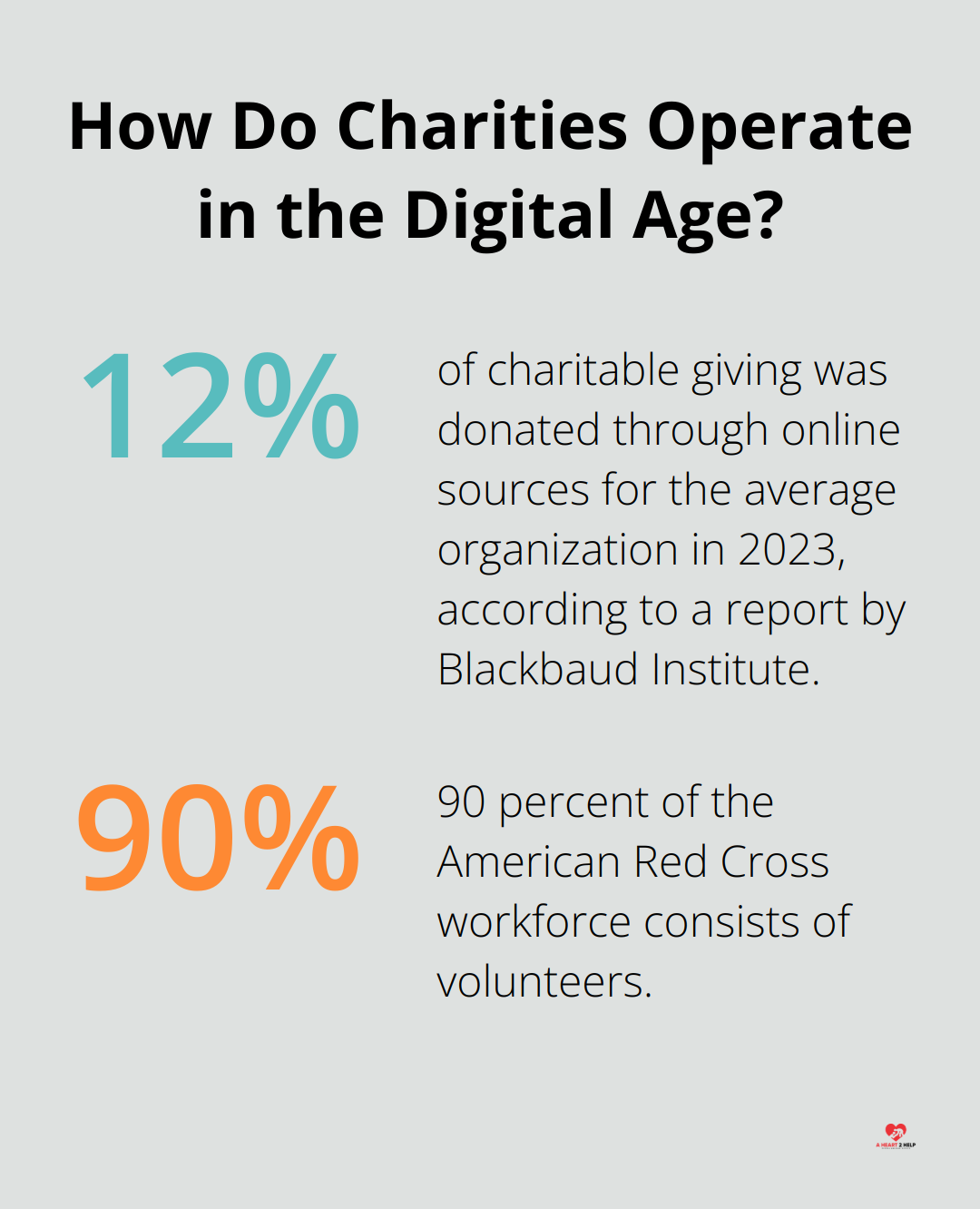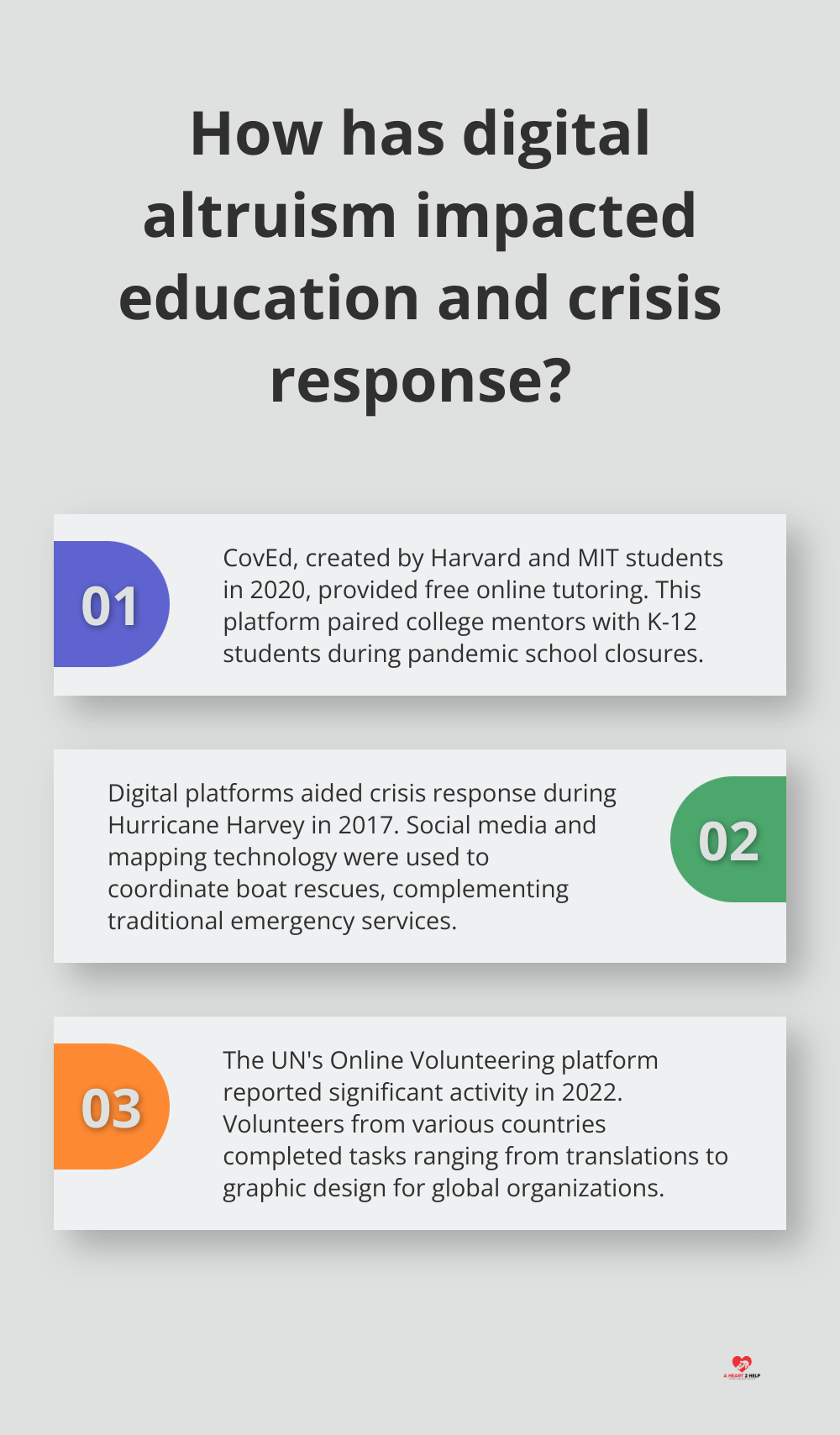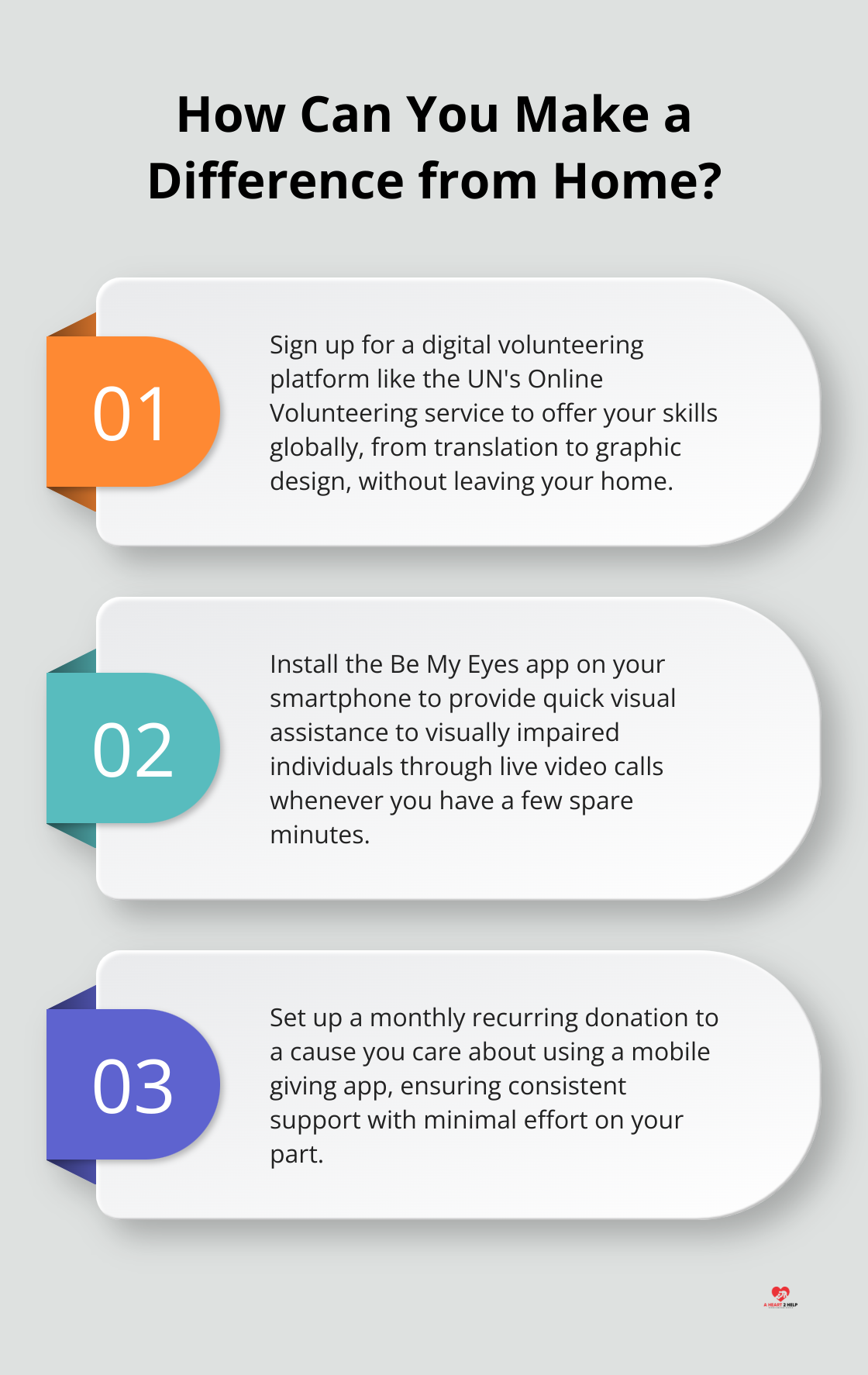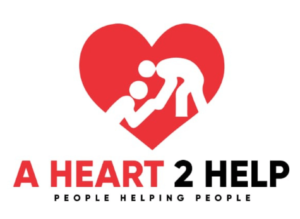Digital altruism is reshaping how we help others, bringing volunteering and charitable giving into the digital age. At A Heart 2 Help, we’ve witnessed firsthand the incredible impact of online platforms connecting those in need with willing helpers.
This transformative movement is breaking down barriers, making it easier than ever for people to contribute their time and skills to worthy causes. In this post, we’ll explore how digital altruism is changing lives and communities around the world.
How Digital Platforms Revolutionize Altruism
Digital altruism transforms the landscape of charitable giving and volunteering. It uses online platforms and digital tools to facilitate acts of kindness, support, and community service. At its core, digital altruism connects those who want to help with those in need, breaking down geographical barriers and time constraints.
The Surge of Online Giving
The growth of online charitable giving has been remarkable. A report by Blackbaud Institute shows the percentage of charitable giving donated through online sources rose from almost 8% in 2022 to over 12% for the average organization in 2023. This surge accelerated the adoption of digital platforms for altruistic purposes.

Crowdfunding sites like GoFundMe have raised over $15 billion since their inception, demonstrating the power of small, individual donations when amplified through technology. Mobile giving apps and text-to-donate services now allow people to contribute to causes they care about with just a few taps on their smartphones.
The Rise of Virtual Volunteering
Online volunteering has opened up new possibilities for people to contribute their skills and time. This shift allows individuals to support causes globally, from providing translation services to offering mentorship, all from their homes.
Non-profit organizations adapt to this digital shift by creating virtual volunteer programs and leveraging social media for fundraising campaigns. For example, the American Red Cross now offers virtual disaster relief volunteering opportunities, allowing people to assist in crisis response remotely. Volunteers constitute about 90 percent of the American Red Cross workforce.
Technology Reshapes Traditional Models
The impact of technology on traditional volunteering extends beyond convenience. Data analytics and AI now match volunteers with opportunities that best suit their skills and interests, increasing the effectiveness of volunteer efforts. This targeted approach ensures that help is directed where it can have the most significant impact.
Digital platforms (like A Heart 2 Help) connect volunteers with local needs in real-time, making it possible for people to offer help when and where it’s most needed. This flexibility has led to a significant increase in the number of individuals willing to lend a hand, as it fits more easily into busy modern lifestyles.
As we move forward, it’s clear that technology doesn’t just change how we volunteer and give – it expands the very definition of what it means to help others in our interconnected world. The next section will explore how these digital altruism platforms are transforming communities on a deeper level.
How Digital Platforms Reshape Community Support
Instant Help at Your Fingertips
Digital altruism platforms revolutionize the way communities support each other. These platforms make it easier for people to lend a helping hand, creating a ripple effect of positive change across neighborhoods and cities. Additional examples of everyday digital altruism include conducting web searches through sites such as Goodsearch and Ripple, as well as forwarding content.

The convenience of digital platforms has dramatically increased volunteer participation. With the help of volunteers, organizations can reallocate operational costs to other initiatives, provide extra hands for various projects, and tap into a wider range of skills and expertise.
During natural disasters, digital platforms allow users to quickly mobilize and provide immediate support. Users can offer shelter, supply food, or help with cleanup efforts (often within hours of a crisis). This rapid response can make a significant difference in emergency situations.
Precision Matching for Maximum Impact
Advanced algorithms now pair volunteers with tasks that match their skills and availability. This targeted approach ensures that help is directed where it’s most needed and can have the greatest impact.
These smart-matching systems also help overcome language barriers and time zone differences, allowing for global collaboration on local issues. A volunteer in New York might help a non-profit in Nepal with grant writing, while a graphic designer in Tokyo could create promotional materials for a charity in Brazil.
Strengthening Social Fabric Through Technology
Digital platforms are not just about connecting volunteers with tasks; they build stronger, more resilient communities.
These platforms create opportunities for neighbors to help neighbors, fostering a sense of belonging and mutual support. They also provide a way for newcomers to integrate into their communities more quickly by participating in local initiatives.
Moreover, digital altruism platforms are changing the demographics of volunteering.
Breaking Down Barriers to Participation
Digital platforms remove many traditional obstacles to volunteering. Time constraints, physical limitations, and geographical distances no longer prevent people from contributing to causes they care about. This inclusivity has expanded the pool of potential volunteers and diversified the skills available to organizations in need.
For example, professionals with specialized skills (such as legal advice or web design) can now offer pro bono services to non-profits across the globe. Retirees can mentor young entrepreneurs without leaving their homes. Students can tutor peers in different countries, fostering cultural exchange alongside academic support.
As digital altruism platforms continue to evolve, they promise to further transform how communities support each other. The next section will explore real-world success stories and case studies that illustrate the tangible impact of these digital innovations on individuals and communities.
Real Stories of Digital Altruism
Bridging Gaps in Education
Digital altruism platforms transform lives daily. In 2020, when schools closed due to the pandemic, CovEd stepped up. This online platform, created by students from Harvard and Massachusetts Institute of Technology, paired college undergraduate and postgraduate student mentors with K-12 students for free online tutoring. Students received academic support and much-needed social interaction during isolation.
Crisis Response in Real-Time
Digital platforms prove invaluable during natural disasters. After Hurricane Harvey in 2017, a grassroots effort used social media and mapping technology to coordinate boat rescues. This digital response complemented traditional emergency services and saved lives.
Global Skills Exchange
The UN’s Online Volunteering platform reports impressive numbers for 2022. Online volunteers from many countries completed assignments. These tasks ranged from translations to graphic design, supporting organizations worldwide that might lack access to such skills locally.
Micro-Volunteering Makes a Macro Impact
Platforms that focus on micro-volunteering show how small acts add up. Be My Eyes, for example, connects visually impaired individuals with sighted volunteers for quick visual assistance. This platform connects blind and low-vision users who want sighted assistance with volunteers and companies anywhere in the world, through live video.
The Power of Crowdfunding
GoFundMe reports that their platform has raised billions since 2010. Many donations go to someone the donor doesn’t know personally. This demonstrates how digital platforms expand our circle of compassion beyond immediate connections.

These stories and statistics paint a clear picture: digital altruism platforms facilitate help and reshape how we think about community and support. They turn moments of spare time into opportunities for meaningful impact and transform the landscape of volunteering and charitable giving.
As innovation continues in this field, the potential for positive change grows exponentially. The next frontier lies in harnessing this digital altruism to address even larger societal challenges (from climate change to global health crises).
Final Thoughts
Digital altruism has transformed how we support and connect with others. Online platforms and innovative apps have removed barriers to volunteering, enabling more people to make a difference in their communities and beyond. The stories we’ve shared illustrate the profound impact these digital tools have on individuals and society as a whole.

We anticipate even greater advancements in the field of digital altruism. As technology progresses, we expect to see more sophisticated matching algorithms, increased integration with emerging technologies, and expanded global reach. These developments will make volunteering and charitable giving more accessible, efficient, and impactful than ever before.
At A Heart 2 Help, we’re proud to be part of this transformative movement. Our care-app connects those who want to help with those in need, fostering a sense of community and support. We encourage you to explore the world of digital altruism and find ways to get involved (through platforms like ours or others).

